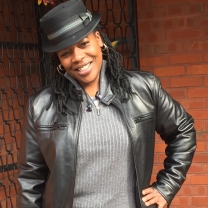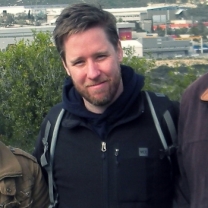 / #MeToo
Subscribe
/ #MeToo
Subscribe

There’s no monolithic explanation for why so many women and non-binary folks were compelled to contribute to the “Me Too” online movement started by Tarana Burke in 2007 and launched into a groundswell by Alyssa Milano. On October 15th Milano’s tweeted, “Me Too” followed by a description of her motivation: “If all the women who have been sexually harassed or assaulted wrote "Me too" as a status, we might give people a sense of the magnitude of the problem.” Explanations of women’s motivations will never coalesce; we’re too diverse a swath of the population. But there are some explanations that leave one wanting. Reductress, a feminist satiric news site chimed in with an article entitled, “Woman Posts Another Facebook Status in Hopes That Men Will Learn to Be Human Beings.” The idea here, generously interpreted, is that it’s ridiculous to think that lack of social awareness is the lacuna of the solution to sexual violence against women, because women have long been pleading for the moral attention such an endemic problem warrants. Men should know, and if they don’t, it’s due to willful not innocent ignorance.
The Reductress’ implicit line—that a social awareness campaign is futile—is right in one way. By and large women already know their testimony won’t elicit men’s concern and galvanize them to end rape culture. For the most part, women’s testimony triggers ire and skepticism, and that’s one of the primary reasons we do not report sexual harassment and assault. But the movement was explicitly a social awareness campaign, right?
There’s a subtler explanation lurking. In her new book, “Down Girl: The Logic of Misogyny,” Kate Manne, Assistant Professor of Philosophy at Cornell University, argues that misogyny is a property of a social system whose function is to enforce and uphold patriarchal relations. Women are targeted when they deviate from patriarchal social scripts, relative to the norms of their communities. This view breaks from a common, naive view, which holds that misogyny is primarily a property of individual agents who are prone to loath all women. As Manne notes, viewing misogyny as a property of social environments generates a helpful distinction between misogyny and sexism. Sexism is a branch of patriarchal ideology which has the function of justifying or valorizing patriarchal ideology. Sexists don’t necessarily hate women categorically; they have erroneous beliefs about gender and women’s capabilities—think of the guy who laments the decline of chivalry and is eager to help the weaker sex, by holding doors, for example. By contrast, misogyny is a property of psychological dispositions and desires, namely desires that patriarchal ideology takes to be true—think Donald Trump and Rush Limbaugh, who don’t simply have erroneous beliefs about gender, but seem to want women to occupy an inferior social position. Patriarchy separates the good women from the bad, the subservient from the defiant. This is why, for example, Ivanka Trump and Kellyanne Conway are on Trump’s good list and Rosie O'Donnell and Hillary Clinton are on his blacklist. All this to say, it’s generally socially unacceptable for women to express their needs or grievances, to demand attention, when doing so conflicts with the interests of men.
Nevertheless, many women felt licensed to speak out, to expose their pain, either with a generic, “Me too” or sometimes in grueling, devastating detail. Why now? Again, no easy answers. The most obvious precipitating event was the fall of renowned Hollywood producer Harvey Weinstein from grace after an onslaught of credible allegations of sexual misconduct. A less obvious explanation of many women’s willingness to speak out is that Milano’s framing of “Me Too” gave women an opportunity to express their pain and grievances in a manner that is socially acceptable, in the form of social giving. Under the mantle of a social awareness campaign, women could share their experiences of sexual violence, which invariably cause a kind of psychic pain, one that permeates most aspects of one’s identity and worldview. Some might consider this kind of indirect communication of one’s needs manipulative, which patriarchy would have us think is natural characteristic of women. But a more fitting explanation is that women availed themselves of the tools that were available to them to make a valid moral claim that might otherwise have been inexpressible in such a public forum. This is a phenomenon recognized in the philosophy of language as an indirect speech act or an implicature, whereby a speaker literally says one thing but communicates another. In our case, what we ostensibly said is, ‘I’m giving to a social awareness campaign by telling you this happened to me’ and what this allowed us to communicate is, ‘I’ve been done a grievous injustice.’
We took what we needed—consciously or not—by giving. Hopefully, we made it harder for people to remain willfully ignorant, but if nothing more, we validated each other’s experiences, experiences that so often leave women shrouded in self-doubt and in isolated suffering. We put some of our pain outside of our bodies and into the social ether where it belongs.
Bianka Takaoka is a philosophy Ph.D. student at Cornell University. Her areas of interest are moral philosophy, philosophy of language, and feminist philosophy. Bianka is a Wellesley alumna. She graduated in 2015 as a Davis Scholar.
Photo Credit: Franzi, "Women—hand drawn seamless pattern of a crowd of different women from diverse ethnic backgrounds," via Shutterstock, 2 November 2017.








